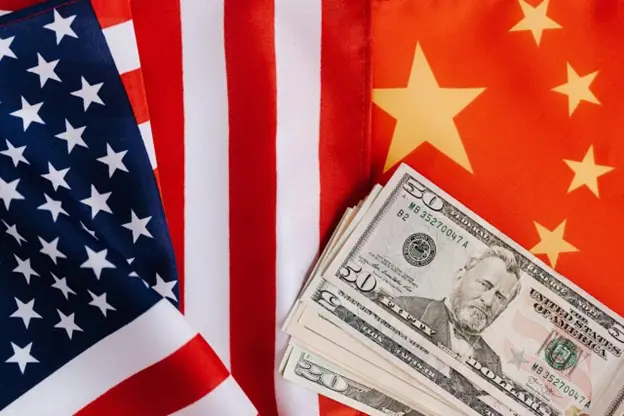In a world increasingly defined by economic uncertainty, the recent news out of Geneva offers a rare glimmer of hope.
On May 12, 2025, the United States and China, the two largest economies in the world, reached a landmark agreement to slash tariffs and hit pause on a trade war that has disrupted over $600 billion in bilateral trade.
But before we all exhale and toast to global economic stability, let’s take a closer look. Is this deal a true turning point in US-China relations, or just another short-term fix that delays the inevitable?
After High-Stakes Talks in Geneva
U.S. Treasury Secretary Scott Bessent and Trade Representative Jamieson Greer announced a 90-day pause on new trade measures and a dramatic rollback of existing tariffs.
The U.S. will cut import tariffs on Chinese goods from a staggering 145% to 30%, while China will reduce its own from 125% to a 10% baseline (Financial Times, Reuters).
That’s no small gesture, and markets certainly noticed. The S&P 500 futures jumped by 2.8%, the dollar gained 0.7%, and even Asian markets breathed a little easier.
Investors had been jittery ever since President Trump’s renewed tariff blitz earlier this year, but this agreement helped calm nerves, for now.
Trade Wars Hurt Everyone
Since the U.S. reignited its aggressive tariff strategy in January 2025, businesses on both sides of the Pacific have suffered. American importers faced sky-high costs. Chinese exporters lost access to critical markets. And global supply chains? They were a mess.
We’re talking stagflation-level pain, rising prices, sluggish growth, and a general sense of dread among manufacturers and retailers. That’s why this new deal, even though it’s temporary, is a huge deal.
The world had been bracing for another recession, and the tariff truce could be the relief valve we all needed. As Zhiwei Zhang, Chief Economist at Pinpoint Asset Management, put it:
“This is better than I expected… It makes investors much less concerned about the damage to global supply chains in the short term.”
This is a 90-Day Truce, Not a Peace Treaty
There’s no guarantee that the goodwill will last, especially with U.S. elections looming and ongoing friction over issues like technology transfer, intellectual property rights, and fentanyl exports.
President Trump may have declared the negotiations a “total reset,” but his past volatility in trade matters means anything can happen next. On the Chinese side, Vice Premier He Lifeng acknowledged “substantial progress” but stopped short of calling the talks a breakthrough.
So, while both sides publicly signaled a desire to avoid “decoupling,” the reality is more complicated. We’re one tweet, one sanction, or one misstep away from this whole thing unraveling.
No Denying, The Tariff Cut is Good News
It brings temporary breathing room to an overheated trade war and gives both nations a chance to find common ground. But make no mistake: this is a ceasefire, not a peace deal.
If history has taught us anything, it’s that trade relationships, especially between titans like the U.S. and China, are complicated, fragile, and subject to change overnight.
So while we enjoy the rally in the markets and lower costs at the docks, let’s keep one eye on Geneva, and the other on Washington and Beijing. Because the next move could change everything.



